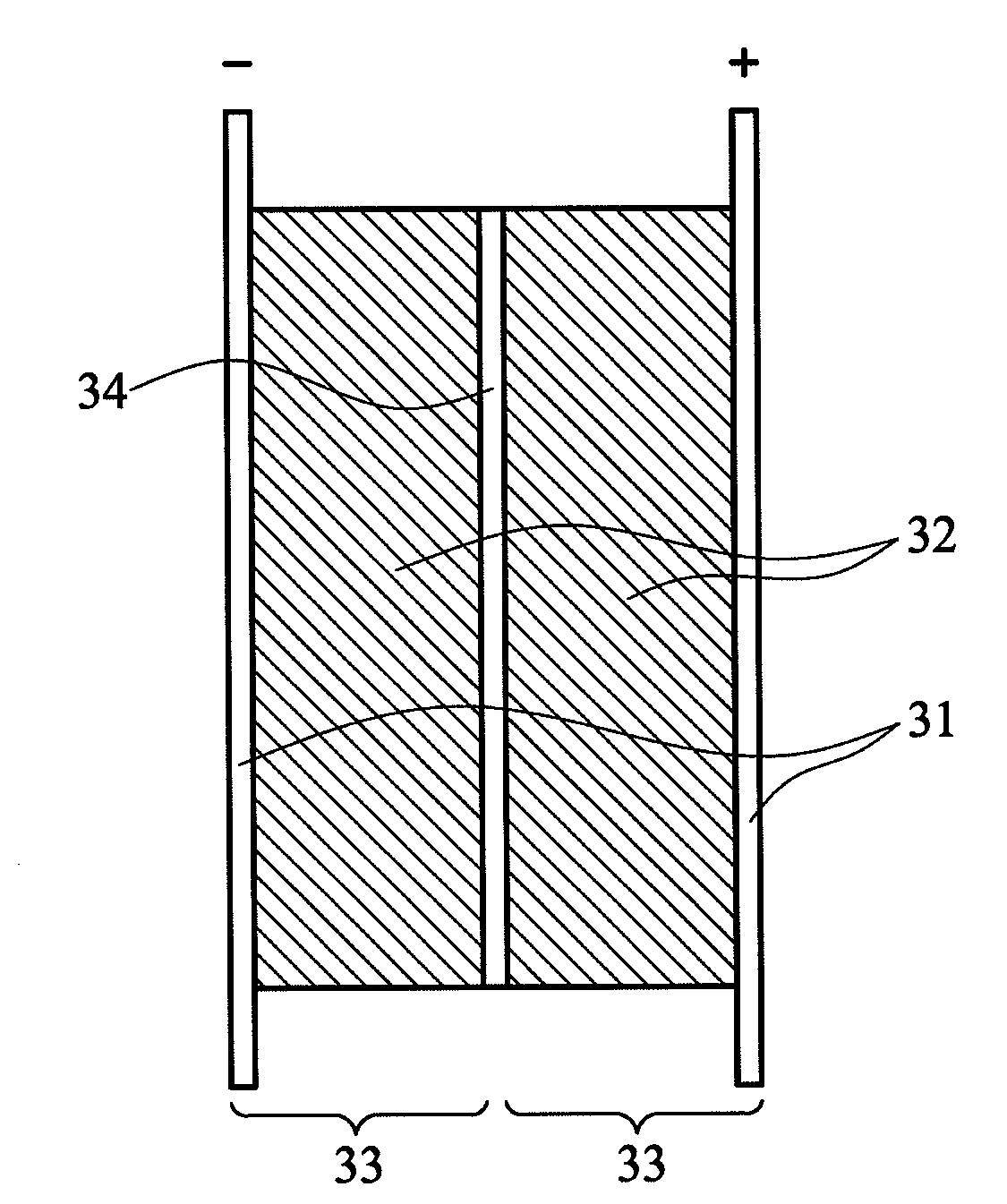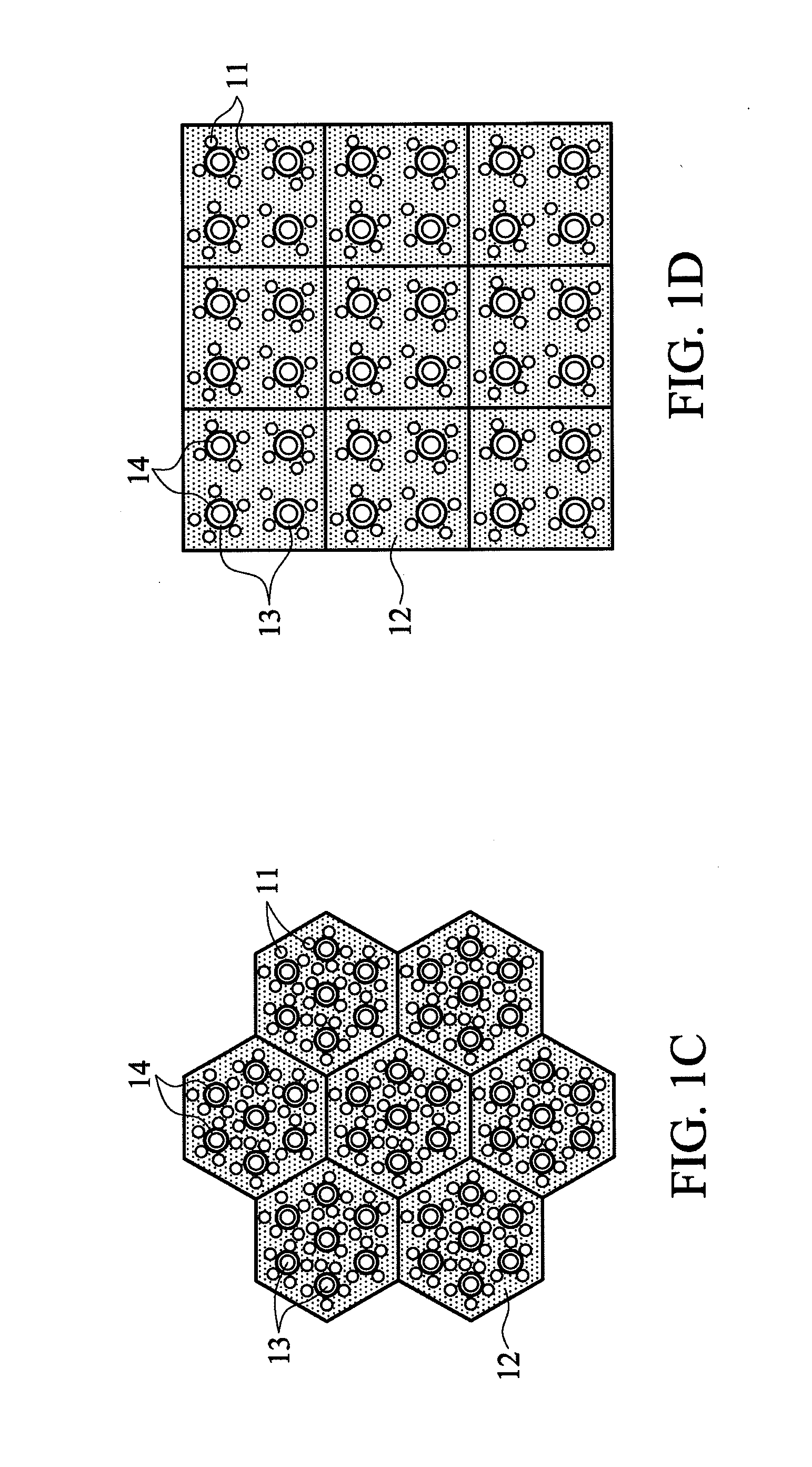Mesoporous carbon material, fabrication method thereof and supercapacitor
a technology of mesoporous carbon and fabrication method, which is applied in the direction of non-metal conductors, cell components, electrical apparatus casings/cabinets/drawers, etc., can solve the problems of difficult to improve the efficiency of conductivity to be greater than 50%, hinder the performance of conductivity of the electrode material of electric double layer capacitors, and affect the performance of the capacitor. , to achieve the effect of improving the conductivity of mesoporous carbon
- Summary
- Abstract
- Description
- Claims
- Application Information
AI Technical Summary
Benefits of technology
Problems solved by technology
Method used
Image
Examples
example 1
Synthesis of Carbon-Zinc Oxide Composite
[0053]1.0 g of F127 (EO106PO70EO106) (a mesophasic lyotropic surfactant) and 0.1 g of zinc acetate were dissolved in 18 g of ethanol and stirred to form a clear solution. Then, 1.3 g of 77 wt % phenolic resin was added to the above solution. After stirring for 2 hours, the mixture was transferred into dishes to evaporate ethanol at room temperature for 10-16 hours. Then, it took 24 hours at 100° C. in an oven to make the phenolic resin solidify (thermopolymerized). The product, an F127 / zinc compound / polymer composite was obtained. Finally, a calcination process was carried out in a tubular furnace under N2 flow at 600° C. for 3 hours to obtain the mesoporous carbon-zinc oxide composite of Example 1. The mesoporous carbon-zinc oxide composite of Example 1 exhibited an ordered hexagonal closed packed structure as evidenced from FIGS. 4 and 5, and the specific surface area and pore diameter of the composite were 562 m2 / g and approximately 3.8 nm,...
example 2
Synthesis of Carbon-Nickel Composite
[0054]1.0 g of F127 (EO106PO70EO106) was dissolved in 18 g of ethanol, and then 1.3 g of 77 wt % phenolic resin was added to form a solution and the solution was stirred for 30 min. Acetic acid was slowly dropped into the solution until the pH level of the solution was approximately 7. Then, 0.73 g of Ni(NO3)2.6H2O was added in to the solution to form a mixture. After stirring for 2 hours, the mixture was transferred into dishes to evaporate ethanol at room temperature for 10-16 hours. Then, it took 24 hours at 100° C. in an oven to make the phenolic resin solidify (thermopolymerized). The product, an F127 / nickel compound / polymer composite was obtained. Finally, a calcination process was carried out in a tubular furnace under N2 flow at 700° C. for 3 hours to obtain the mesoporous carbon-nickel composite of Example 2. The mesoporous carbon-nickel composite of Example 2 exhibited an ordered hexagonal closed packed structure as evidenced from FIGS. ...
PUM
| Property | Measurement | Unit |
|---|---|---|
| size | aaaaa | aaaaa |
| temperature | aaaaa | aaaaa |
| temperature | aaaaa | aaaaa |
Abstract
Description
Claims
Application Information
 Login to View More
Login to View More - R&D
- Intellectual Property
- Life Sciences
- Materials
- Tech Scout
- Unparalleled Data Quality
- Higher Quality Content
- 60% Fewer Hallucinations
Browse by: Latest US Patents, China's latest patents, Technical Efficacy Thesaurus, Application Domain, Technology Topic, Popular Technical Reports.
© 2025 PatSnap. All rights reserved.Legal|Privacy policy|Modern Slavery Act Transparency Statement|Sitemap|About US| Contact US: help@patsnap.com



